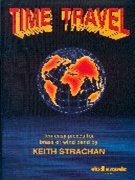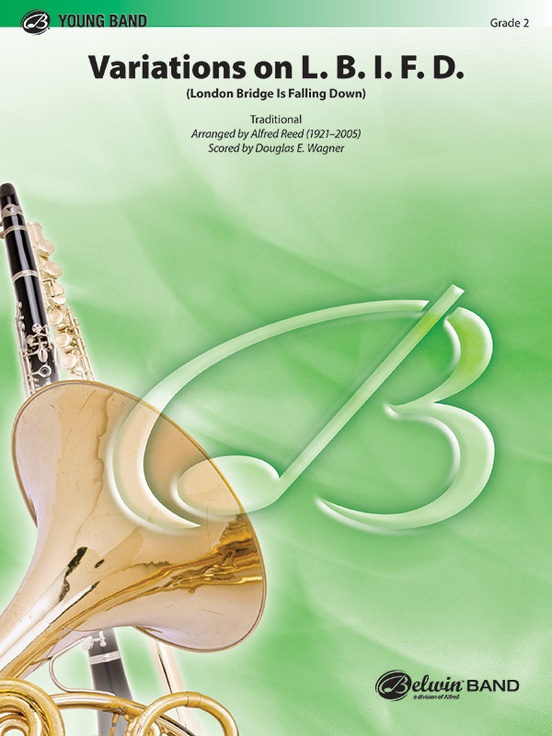Results
-
 £3.95
£3.95 -
 £3.95
£3.95TIME TRAVEL (Part 4 in B flat BC) - Strachan, Keith
Trombone, Euphonium (for Continental Europe)
Estimated dispatch 7-14 working days
-
 £3.95
£3.95TIME TRAVEL (Part 4 in B flat TC) - Strachan, Keith
Tenor Saxophone, Baritone, Trombone, Euphonium
Estimated dispatch 7-14 working days
-
£3.95
ZOO BALL (Part 1 in B flat) - Strachan, Keith
1st Clarinet, 1st Trumpet/CornetThe Zoo Ball is a suite of twelve light-hearted pieces for the young wind of brass band by Keith Strachan.It can be seen from the titles that the young player is introduced to a variety of dance rhythms that are both fun to play and enjoyable to listen to.It is scored in five parts (some of which divide in places) so can be played by ensembles of aroung ten players up to full band. When a fuller instrumentation is available, teachers and conductors are encouraged to vary the scoring as appropriate, particularly in repeated sections. This will allow players to rest occasionally and add changes of colour to the band sound by avoiding excessive doubling.Contents:Lion's PrideHippo's WaltzKangaroo HopEel CongaElephants' MarchSnake, Rattle and RollPanther TangoPenguin PolkaBuffalo BluesBlack Mamba SambaTiger RagMonkey Swing
Estimated dispatch 7-14 working days
-
£3.95
ZOO BALL (Part 2 in B flat) - Strachan, Keith
2nd Clarinet, 2nd Trumpet/Cornet, Flugel HornThe Zoo Ball is a suite of twelve light-hearted pieces for the young wind of brass band by Keith Strachan.It can be seen from the titles that the young player is introduced to a variety of dance rhythms that are both fun to play and enjoyable to listen to.It is scored in five parts (some of which divide in places) so can be played by ensembles of aroung ten players up to full band. When a fuller instrumentation is available, teachers and conductors are encouraged to vary the scoring as appropriate, particularly in repeated sections. This will allow players to rest occasionally and add changes of colour to the band sound by avoiding excessive doubling.Contents:Lion's PrideHippo's WaltzKangaroo HopEel CongaElephants' MarchSnake, Rattle and RollPanther TangoPenguin PolkaBuffalo BluesBlack Mamba SambaTiger RagMonkey Swing
Estimated dispatch 7-14 working days
-
£3.95
ZOO BALL (Part 3 in B flat) - Strachan, Keith
3rd ClarinetThe Zoo Ball is a suite of twelve light-hearted pieces for the young wind of brass band by Keith Strachan.It can be seen from the titles that the young player is introduced to a variety of dance rhythms that are both fun to play and enjoyable to listen to.It is scored in five parts (some of which divide in places) so can be played by ensembles of aroung ten players up to full band. When a fuller instrumentation is available, teachers and conductors are encouraged to vary the scoring as appropriate, particularly in repeated sections. This will allow players to rest occasionally and add changes of colour to the band sound by avoiding excessive doubling.Contents:Lion's PrideHippo's WaltzKangaroo HopEel CongaElephants' MarchSnake, Rattle and RollPanther TangoPenguin PolkaBuffalo BluesBlack Mamba SambaTiger RagMonkey Swing
Estimated dispatch 7-14 working days
-
£3.95
ZOO BALL (Part 4 in B flat BC) - Strachan, Keith
Trombone, Euphonium (for Continental Europe)
Estimated dispatch 7-14 working days
-
£3.95
ZOO BALL (Part 4 in B flat TC) - Strachan, Keith
Tenor Saxophone, Baritone, Trombone, EuphoniumThe Zoo Ball is a suite of twelve light-hearted pieces for the young wind of brass band by Keith Strachan.It can be seen from the titles that the young player is introduced to a variety of dance rhythms that are both fun to play and enjoyable to listen to.It is scored in five parts (some of which divide in places) so can be played by ensembles of aroung ten players up to full band. When a fuller instrumentation is available, teachers and conductors are encouraged to vary the scoring as appropriate, particularly in repeated sections. This will allow players to rest occasionally and add changes of colour to the band sound by avoiding excessive doubling.Contents:Lion's PrideHippo's WaltzKangaroo HopEel CongaElephants' MarchSnake, Rattle and RollPanther TangoPenguin PolkaBuffalo BluesBlack Mamba SambaTiger RagMonkey Swing
Estimated dispatch 7-14 working days
-
 £61.95
£61.95Variations on L. B. I. F. D.
Alfred Reed needs no introduction for those who admire his distinguished concert band works. This arrangement for concert band draws from five movements of his original 28 composed for brass quintet based on "London Bridge Is Falling Down." Included are: "Statement," "Waltz," "March Fo(u)rth!," "A Little Funeral Music, Please (Eine Kleine Trauermusik)," and "Finale." A demonstration of compositional techniques practiced during the past three centuries, the work is filled with captivating and highly musical moments. Even though players will encounter a few changes in tonal centers, meters, and tempo throughout, there is not much that would get in the way of having a fun experience learning and performing. (2:45)
Estimated dispatch 3-5 working days
-
 £57.50
£57.50Theme From Family Guy - Murphy
From the wildly popular animated TV series Family Guy comes this swinging and thoroughly enjoyable theme. Solidly scored in the style of a Las Vegas show band, this is sure to be a hit with all audiences.InstrumentationTrombone 1 (x3)Trombone 2 (x3)Baritone - Bass Clef (x2)Baritone Treble Clef (x2)Tube (x4)Double Bass (x1)Percussion (x2)Timpani (x1)Mallet Percussion (x2)Piccolo (x1)Flute (x8)Oboe (x2)Bassoon (x2)B Flat Clarinet 1 (x4)B Flat Clarinet 2 (x4)B Flat Clarinet 3(x4)E Flat Alto Clarinet (x1)B Flat Bass Clarinet (x2)E Flat Alto Saxophone 1 (x2)E Flat Alto Saxophone 2 (x2)B Flat Tenor Saxophone (x2)E Flat Baritone Saxophone (x1)B Flat Trumpet 1 (x3)B Flat Trumpet 2 (x3)B Flat Trumpet 3 (x3)French Horn 1 (x2)French Horn 2 (x2)
Estimated dispatch 7-14 working days
